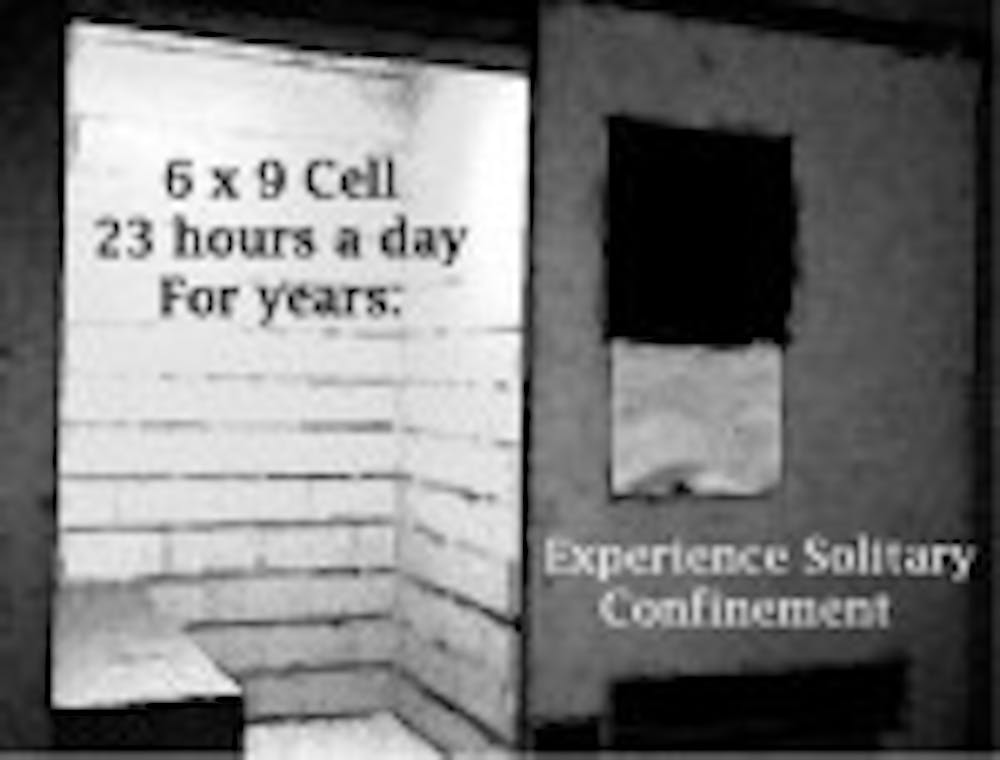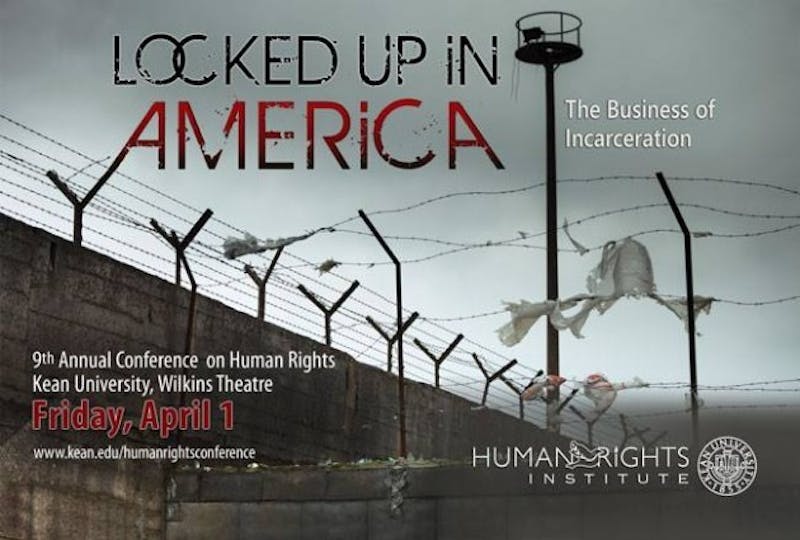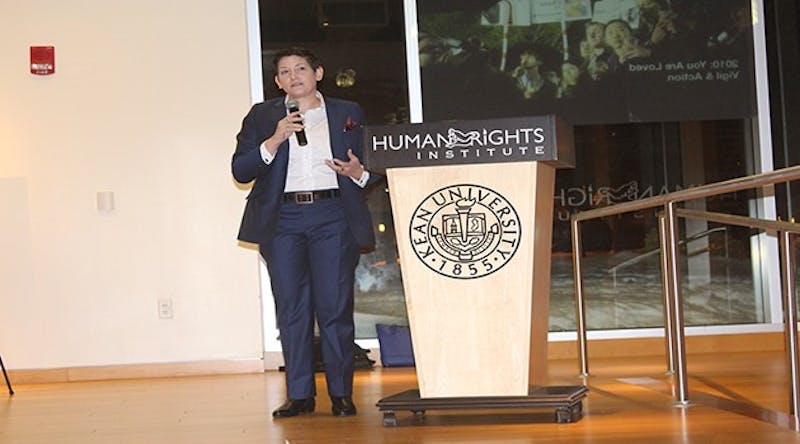On Friday, April 8, 2016, the Human Rights Institute at Kean University held its ninth annual conference. Entitled Locked up in America: The Business of Incarceration, it was a close examination of critical issues of incarceration. Meant to educate and inform, the conference featured a variety of experts who spoke about their interactions with the justice system and U.S. prison industry. Each expert is in their own way a social justice advocate that works tirelessly toward a better tomorrow. During the conference, they took time to share their insights, experiences and expertise related to the prison system.
The statistics surrounding incarceration are staggering. While the U.S. has a mere five percent of the world population, somehow it also has 25 percent of the prison population, making it the highest documented incarceration rate in the world. Sadly, these harsh statistics are thoroughly felt by every part of the population.
Chris McNabb, National Religious Campaign Against Torture Student Organizer, stated, “Poverty and race are the two greatest indicators of who will end up in prison.” It is undeniable that the prison system disproportionately impacts certain people, these are typically impoverished minorities.
Today, a criminal record serves as both a direct cause and consequence of poverty. The prison system has a way of punishing the poor for being such. Often, a poor man and rich man can commit identical crimes and have drastically different results. Every day there are about 500,000 people in jail who are still presumed innocent and awaiting trial, just because they are too poor to pay bail.
Race is also a multiplier of disadvantage when it comes to effects of incarceration.
McNabb states, “1 in 3 African American babies born today will go to prison and 1 in 6 Latino boys.”
For many, race alone dictates their experiences with the law and prison system. Moreover, for them what begins as ordinary life experiences and mistakes are transformed into defining and tragic moments with irreparable consequences.
These statistics are not born inside prison but on the street where it begins. The first step in incarceration starts with interactions between police and people. From the beginning black and poor people are targets. Evidently, they experience more interactions, more charges, more convictions, more cruelty, less consideration, less leniency and less compassion.
Incarceration has a way of institutionally perpetuating the discriminatory nature of society that many people work copiously to combat daily. The unequal effects of the prison system have very real ramifications in society. Mass incarceration effectively removes the minority poor from mainstream society.
In the most literal sense, prison and jail are correctional facilities in which people are legally held as a punishment for crimes they have committed or while awaiting trial, but in reality it is much more than that. The experience of living and surviving in prison is a unique one that many people cannot truly fathom. It is a world within one and people are irrevocably shaped by the experiences inside.
Moreover, most people who serve time in prison are reintroduced to society with virtually no consideration of what that experience does to someone. There are certain people whose lives are deemed expendable or less than and in an interesting way, the prison system inadvertently reflects the value society places on them.
Diannis Borras senior psychology major states, “It raises questions about what we as a society accept and justify.”
Not all of prison is attributed to systemic problems and racial or class differences. A lot of mass incarceration can be explained in one symbol: $. The world is one driven by the dollar, and prison system is extremely lucrative. The incarceration system has become and exceedingly private industry and in the process, generated multi-billion dollars. There are a select few who profit tremendously from prisons. The three largest “prison profiteers” are: phone scammers like GLT, bail industry and sleazy politicians.
Quite frankly, with a recidivism rate of 68 percent, the system is failing to correct or rehabilitate. There are irrefutable structural aspects to the prison system that desperately need attention but separate from those; there are humane aspects prison reform that take precedence. While people work for better conditions in the future, there are still people who in the meantime must endure the conditions that persist today.
At the epicenter of the prison reform movement is the push for change in the overuse of solitary confinement. Solitary confinement is a form of imprisonment in which an inmate is isolated from any human contact, with the exception of prison staff.
Since 1995, the use of solitary confinement has nearly doubled in 20 years. Research has shown that after 15 days in solitary, permanent psychological trauma occurs.
Terrell Blount, former inmate and Program Coordinator states, “Solitary is not limited to emotional and psychological. Physical ailments and illnesses are ignored.” Solitary has been cited as an additional measure of protection for the inmate and the prison community, however most times it fails in this regard.
McNabb states, “Many people think solitary confinement makes prison safer, that’s an illusion.” Simply put, solitary is a manifestation of punishment that is inhumane, cruel and counterproductive.
To bring greater awareness to the inhumanity of solitary confinement, Kean University hosted a solitary prison cell replica on campus. Individuals were invited to go inside and experience solitary confinement for themselves. It included audio recording from a maximum security prison in Maine and participants could spend up to one hour in the cell.
The purpose of the replica was for participants to sit by themselves and think about what it would be like to be imprisoned alone in a cell for hours, days or years. While this replica can never truly reflect the entire experience of being a prisoner in solitary confinement, it is an important experience. There is a degree of desensitization that is pervasive contemporarily and this was a chance to diminish that.
Overall, the prison system is plagued by human rights abuses at every level. There are so many cliché ways to say this is wrong, this is inhumane; there are so many statistics supporting the fact that there’s a problem, and yet it remains.
There’s something to be said for the way it’s justified treating people as anything but that; the simple fact is criminals are people. They are people first and foremost. And in the words of McNabb, “Each of us is more than the worst thing that we’ve ever done.”






